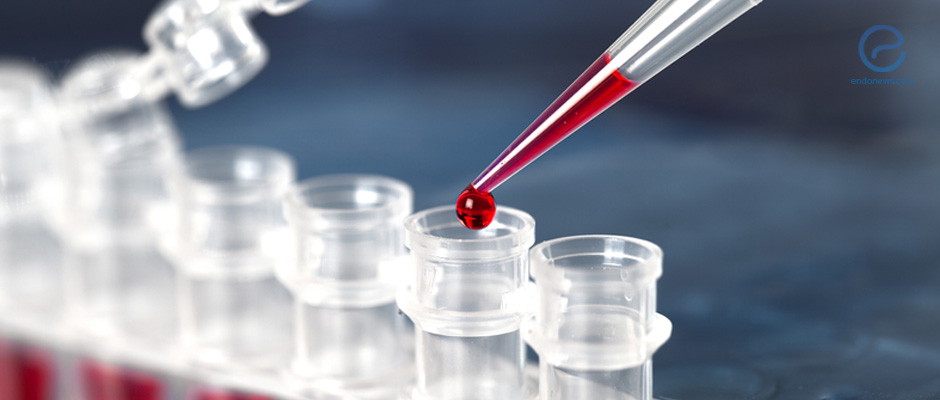High-Mobility Group Box 1 Expression Could Lead to Disease Progression
Nov 8, 2017
High-Mobility Group Box 1 expression is found to be increased in the menstrual blood, which the authors believe drive endometriosis disease development.
Key Points
Highlights:
- This study by Shimizu et al. seeks to understand how high-mobility group box (HMGB) 1 expression in menstrual blood drives endometriosis disease progression, specifically through the aberrant ectopic growth of human endometriotic stromal cells (ESCs).
Importance:
- The mechanism(s) that causes endometriosis development is largely unknown. Studies like this, hope to elucidate at least part of its generation, so that future research can be focused on creating more effective therapies that target the endometriosis itself.
What’s done here?
- 84 of 139 participants in this study had endometriosis, and the others had benign gynecologic conditions. None were under hormonal therapies.
- The menstrual phase of the patient was evaluated by the participant's basal body temperature and histological analysis of the endometrium.
- Peripheral blood, menstrual blood, and peritoneal fluid samples; as well as peritoneal endometriosis and normal endometrial tissue samples were obtained.
- Enzyme-linked immunosorbent assay (ELISA) kits were used to detect HMGB1 levels in the serum, menstrual blood, and peritoneal fluid samples.
- Tissue samples were subjected to immunohistochemistry, to determine the expression levels of the receptors for advanced glycation end products (RAGE).
- Endometriotic Stromal Cell Cultures performed and then exposed to HMGB1 and lipopolysaccharide; to examine expression levels of vascular endothelial growth factor (VEGF) and RAGE.
Key results:
- HMGB1 expression was highest in the menstrual blood samples compared to the peritoneal fluid or serum sample.
- The normal and ectopic endometrium both had RAGE expressed within the tissues.
- ESC VEGF production was higher when there was a combination of 100 ng/mL HMGB1 and 100 ng/mL LPS administered, or only 1000 ng/mL of HMGB1 is administered.
- It is thought that angiogenesis, the creation of new blood vessels, and inflammation will drive endometriosis disease progression after retrograde menstruation, which could very well be the consequence of high levels of HMGB1 expression in menstrual fluid.
Lay Summary
Endometriosis can often be characterized by the aberrant ectopic growth of endometriotic stromal cells (ESCs); however, research has yet to elucidate the mechanism driving this growth. The authors of this study, namely Shimizu et al., believe that the high-mobility group box (HMGB) 1 expression in menstrual blood may be a part of this disease progression mechanism. They delineate their experimental process and related results in a publication titled “High Expression of High-Mobility Group Box 1 in Menstrual Blood: Implications for Endometriosis” found in Reproductive Sciences.
The study had 139 participants, all of whom had some gynecological condition, but only 84 specifically had endometriosis. Peripheral blood, menstrual blood, and peritoneal fluid samples were collected. Enzyme-Linked Immunosorbent Assay was used to gauge HMGB1 levels in the serum, menstrual blood, and peritoneal fluid samples. Some participants also gave peritoneal endometriosis tissue samples, and some others gave normal endometrial tissue samples. These tissue samples were subject to immunohistochemistry, which then revealed the expression levels of the receptors for advanced glycation end products (RAGE) in the tissues of interest. The researchers also did endometriotic stromal cell cultures. Real-time Polymerase chain reactions (PCR) were used 24 hours after ESC exposure to HMGB1 and lipopolysaccharide to determine the expression levels of vascular endothelial growth factor (VEGF) and RAGE mRNA. The quantitative data in this study was subject to statistical analysis.
The results showed that HMGB1 was highest in the menstrual blood samples than any of the other samples collected, namely the peritoneal fluid or serum sample. RAGE expression was also found in the endometriotic and healthy tissue. Finally, a combination of 100 ng/mL HMGB1 and 100 ng/mL lipopolysaccharide or just 1000 ng/mL HMGB1 was found to increase ESC VEGF production. High expression of HMGB1during menstruation may indicate that retrograde menstruation can exacerbate endometriosis through angiogenesis, namely the creation of new blood vessels, and inflammation.
Research Source: https://www.ncbi.nlm.nih.gov/pubmed/29017437
HMGB1 ESCs LPS VEGF RAGE Menstruation mRNA

